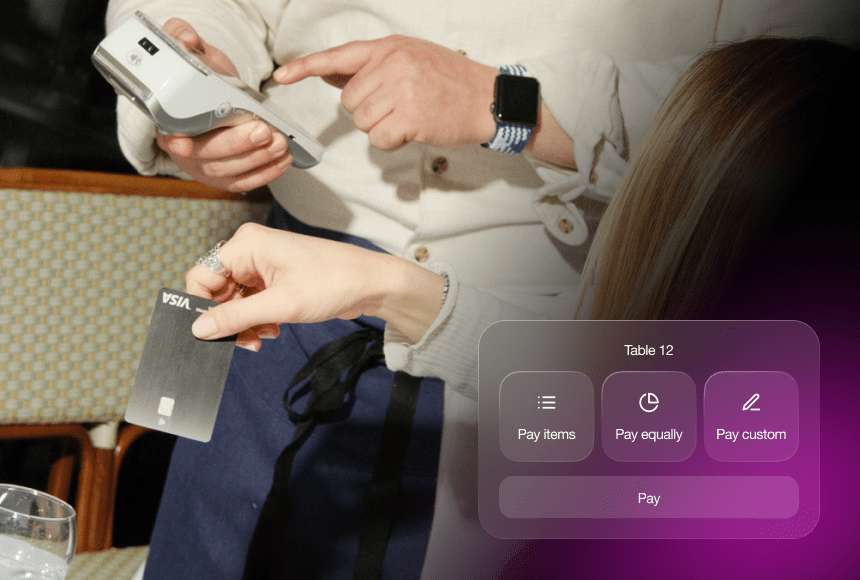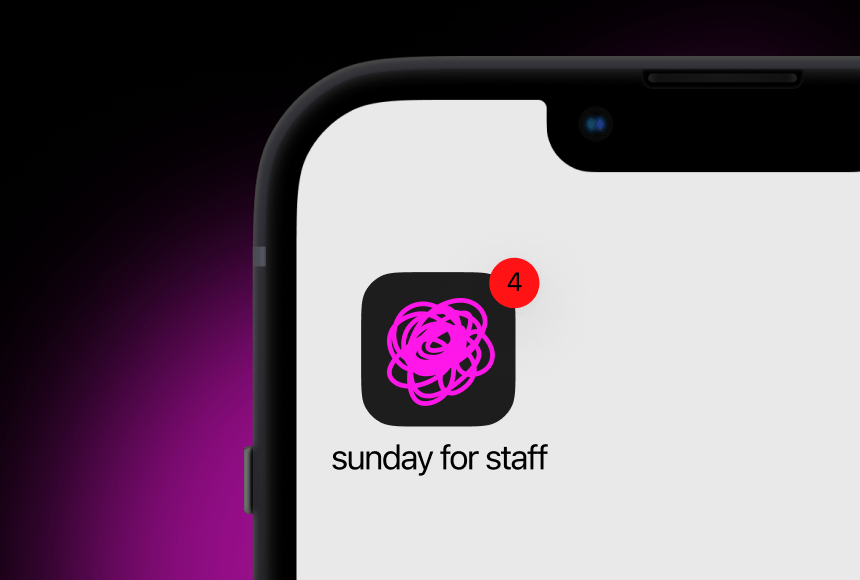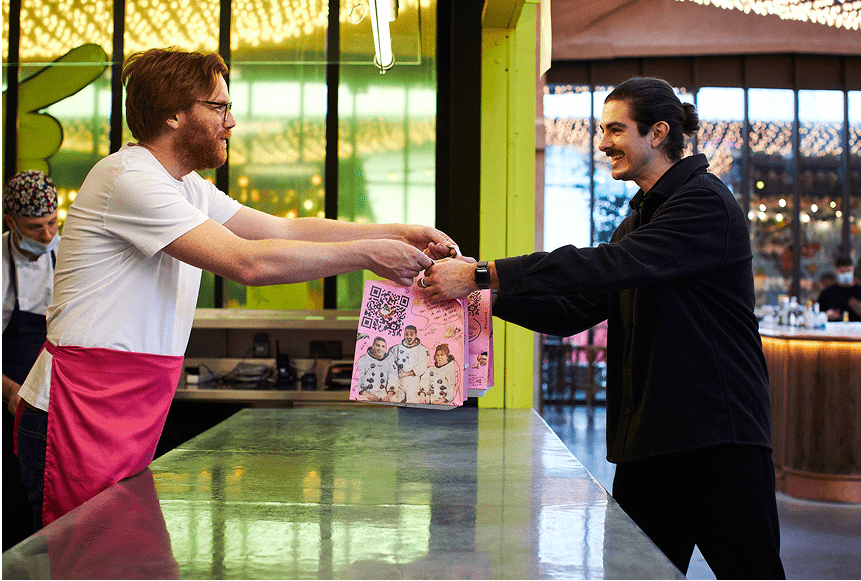
A Glimpse into the Future of Pick-Up Services: Meeting Diners’ 2025 Expectations
The Rise of Super-Convenient Meal Pick-Ups
Picture this scene: It’s a Friday evening in 2025. Your restaurant’s phones are buzzing, online orders are piling up, and you have a queue of customers waiting to collect their meals. Despite your best efforts, there’s a bottleneck at the pick-up counter, leaving hungry diners impatient. But wait—there’s a new norm. Click & Collect has become so seamless that customers no longer need to line up at all. With a few taps on their phone, they pay in advance, schedule a pick-up time, and walk in to find their order ready. No confusion, no congestion, no wasted time.
This vision of “zero-queue” pick-up is not a fantastical guess—it’s all but a guarantee, driven by evolving consumer habits, technological leaps, and the fierce competition in the restaurant industry. In the UK, where over 68% of consumers have used click & collect services for groceries and retail purchases, it’s clear that diners expect the same kind of instant convenience when they’re hungry. The question for restaurant owners is no longer whether to offer a click & collect option, but how to make it so effortless that waiting in line becomes an artifact of the past.
In this article, we’ll explore why queue-free pick-up is absolutely crucial by 2025, the key technologies making it possible, and how restaurant owners can adapt without sacrificing that warm, personal touch. From automation to intuitive payment platforms, we’ll delve into practical strategies that shift the focus from “How do we manage lines?” to “How do we orchestrate a perfect, queue-free experience?”
Why Zero-Queue Is the Gold Standard
The eating-out culture is evolving faster than ever, boosted by rising digital literacy, a love for convenience, and new lifestyle trends. Gone are the days when a quick takeaway was considered merely a bonus. Today, it’s central to how customers plan their meals, whether for a last-minute dinner or a meticulously planned indulgence. If your online ordering system is hard to navigate or your pick-up process is chaotic, diners will look for alternatives.
Restaurateurs who prioritise a seamless pick-up experience often find:
- Increased loyalty: When collecting an order is hassle-free, customers return more often.
- Positive online reviews: Satisfied diners are quick to praise convenience, which can boost your rating on platforms like Google.
- Higher order volumes: An easy, queue-free click & collect process encourages customers to order more frequently—and spend more each time.
- Competitive edge: Standing out in a crowded market is easier when your pick-up process feels like a five-star service.
By 2025, restaurants that still rely on the old “pay upon arrival and stand in line” model might find themselves falling behind. With the popularity of contactless payment, mobile apps, and integrated online ordering, the zero-queue expectation will become an industry norm—especially in urban centres where time is at a premium.
Keys to a Queue-Free Click & Collect
Creating a frictionless pick-up process might sound complicated, but it rests on just a few core building blocks:
- Intuitive online ordering portal: Diners want to place orders in seconds, so your website or app must be straightforward. Clear categories, mouth-watering images, and succinct descriptions matter.
- Reliable payment solutions: Instead of the word “TPE,” think about a payment terminal or a secure online gateway that allows card and mobile wallet payments. By 2025, the standard will be swift, flexible payment options that customers trust implicitly.
- Smart scheduling: Give customers a chance to indicate when they’d like their food. Real-time updates can help stagger pick-up times, eliminating bottlenecks.
- Order tracking: Customers crave information. Sending a notification or a text when their order is ready means no one lingers in the waiting area.
- Efficient packaging system: Labelled bags or boxes can halve the time your staff spends hunting for the right order.
When all these elements come together, click & collect grows from a minor convenience to a defining aspect of your customer experience.
The Tech Innovations Driving Tomorrow’s Pick-Up
What technologies will restaurants depend on for a no-queue future? You may already be using some features, while others might feel like distant possibilities. Here are the solutions that are quickly becoming the baseline:
1. Mobile Ordering & Payment Integration
Mobile-friendly ordering is nothing new, but the depth of integration is set to soar. By 2025, a robust app or mobile web service will allow customers to do more than just pick items from a menu. They’ll schedule pick-up times, monitor real-time prep progress, and pay with a few taps—eliminating the need to queue at a card reader or cash register. Services like sunday already give restaurant-goers the option to pay through a QR code at the table or online, seamlessly merging the in-person and digital experiences.
2. Automated Pickup Stations or Lockers
Imagine collecting your takeaway from a dedicated temperature-controlled locker. You tap a code on your phone or scan a QR code, and the locker door opens. The entire exchange takes seconds. This concept already exists in certain fast-food chains and is set to expand. In busy urban centres where every second counts, the speed and hygiene factor of automated lockers are significant selling points.
3. Data-Driven Forecasting
Machine learning tools are helping restaurants predict busy periods, popular dish choices, and average preparation times. Pairing order data with real-time analytics can tell you exactly when you need extra kitchen staff or how to pace pick-up slots. A well-timed “Your order is ready” notification can eradicate queues before they form. The result? Smiling staff and delighted customers who whisk in and out without fuss.
4. Contactless Check-Ins
Beyond the point of payment, contactless technology can improve the customer’s arrival experience. In some establishments, customers might check in via a mobile app or QR code at a kiosk, confirming their arrival. Within moments, staff know a particular order needs to be handed over at a designated station. With minimal staff interaction, the entire hand-off feels almost instantaneous.
From Chaos to Calm: A Quick Case Study
Let’s illustrate these ideas with a hypothetical but realistic example. Meet Priya, the owner of a mid-range fusion restaurant in Manchester. Her place is known for inventive dishes, but the small building layout often translates to cramped pick-up queues. In late 2023, she decided to upgrade her entire ordering system.
She launched an app synchronised with her stock management, created a user-friendly website for orders, and installed a card payment terminal that integrates with a QR code payment option. She also set up pick-up lockers near the entrance, each temperature-controlled to keep dishes warm or chilled. Notifications ping her customers when their meals are ready to pick up.
As a result, the chaos at the door lifted almost overnight. Priya saw her online orders jump by 25%, received rave Google reviews about the effortless pick-up process, and her staff reported feeling less stressed. By merging technology with a conscious workflow redesign, she turned a dull queue scene into a highlight of her brand experience.
Ensuring a Personal Touch in a High-Tech World
Some restaurateurs worry about technology creating a cold, impersonal environment—fearing that apps, QR codes, and automated lockers might rob the business of its personality. But the two needn’t conflict. In fact, thoughtful tech can free your team from busywork, allowing them to engage in genuine conversations with customers. Here’s how to balance both sides:
- Personal messages: Add a friendly note on final receipts or confirmation emails, perhaps describing a recommended wine pairing or an upcoming weekly special.
- Uniform branding: Keep your colours, logos, and style consistent across your website, app, locker screens—everywhere your customer interacts.
- Encourage feedback: After pickup, invite customers to share what they liked—or didn’t. Whether it’s via an automated email or a prompt on the packaging, it’s a low-pressure way to gather helpful insights and offer a personal touch.
- Train staff to focus on hospitality: When they’re not worrying about card payments or rummaging for the correct bag, staff can greet every visitor warmly, answer questions, and build rapport.
Preparing Your Team for a Queue-Free Reality
Transitioning to a tech-heavy approach is rarely plug-and-play. Your employees need to feel comfortable with systems, from updating stock to handing orders to the correct person. The quality of internal training can make or break your zero-queue ambition. A thorough training plan might include:
- Onboarding modules: Short, clear sessions walk staff through the online ordering platform, from accepting orders to verifying payment.
- Guided demos: Role-play entire scenarios, from receiving an order to notifying the customer. Practice scanning a QR code, toggling between in-dining and takeaway modes, or printing updated labels.
- Feedback loops: Collect staff opinions on what’s working or confusing. If the system is clunky to your team, it’ll be just as frustrating for customers.
- Clear guidelines: Ensure employees know how to handle edge cases—like partial refunds or last-minute changes—to maintain smooth pick-ups with minimal fuss.
Treat your staff training like a favourite recipe: refine it, test it, be open to fresh ingredients (new features), and adapt as needed until the result consistently delights everyone involved.
When Click & Collect Meets In-House Dining
Offering a swift pick-up service doesn’t have to mean compromising dine-in experiences. In fact, both can complement each other beautifully, especially at busier times. Here are ways to strike the right balance:
- Separate pick-up stations: Keep the takeaway flow distinct from in-dining areas to avoid confusion and maintain ambiance.
- Reservations synergy: If you take online reservations, consider linking the system to your pick-up portal. A diner could reserve a table for a main meal but also schedule a pick-up dessert for later.
- QR code payments at the table: This technology, such as the one sunday provides, enables customers to pay or split the bill without waiting for a paper check—reflecting the same quick satisfaction they get from a streamlined takeaway experience.
- Upselling opportunities: Encourage your dine-in guests to try your click & collect service another time. That next busy Monday, they might skip cooking altogether and order for pick-up.
Embracing Sustainability in Your Pick-Up Strategy
In 2025, consumers expect speed, but not at the expense of the environment. As you refine click & collect, weave in eco-friendly options. This approach not only shows social responsibility but can genuinely enhance efficiency.
- Smart packaging: Offer compostable, biodegradable, or recyclable containers. While costlier at face value, these can be a persuasive differentiator in a competitive market.
- Waste reduction: Data-driven inventory management means fewer wasted ingredients. Accurately forecasting demand cuts down on surplus food.
- Sustainable pick-up stations: If installing electronic lockers, look for energy-efficient models. Incorporate sensors that only power specific compartments as needed.
- Reward eco-conscious customers: Provide discounts for those who bring reusable containers or skip cutlery—any step that reduces waste while promoting brand loyalty.
Building a greener click & collect system not only responds to consumer preferences but also positions your restaurant as a forward-thinking industry leader.
Busting Common Myths About Queue-Free Pick-Up
With so many new technologies and processes, there are bound to be misconceptions floating around. Let’s clear up some common myths:
| Myth | Reality |
|---|---|
| “High-tech solutions are impersonal.” | By freeing staff from repetitive tasks, technology actually enables them to spend more time offering genuine hospitality. |
| “It’s too expensive for smaller restaurants.” | Scalable, subscription-based solutions exist. Start with essential features and add advanced modules when you’re ready. |
| “Older customers won’t use digital tools.” | Many older guests appreciate how easy it can be—no more fiddling at the counter or waiting in line. |
| “We’ll lose control of the process.” | Modern platforms give you detailed oversight, from inventory levels to real-time order statuses. |
Top Tips for Designing Your 2025 Pick-Up Space
Physical layout and ambience still count, even in an era of digital convenience. Your pick-up space has the power to reinforce your brand and deliver a memorable experience. When revamping your interior for 2025, keep these tips in mind:
- Make it inviting: A dedicated waiting nook with comfortable seating and appealing décor can make even a short wait feel pleasant.
- Clear signage: Label your pick-up station clearly—ideally in large, bold lettering—so guests immediately know where to go.
- Ample lighting: Good lighting helps customers find their order details quickly on their phone and fosters a feeling of safety and warmth.
- Streamlined path: Nobody wants to weave through busy tables or a cramped hallway to collect their meal. Plan for smooth traffic flow.
Think of your pick-up station as an extension of your kitchen: it should be efficient, well-organised, and primed for quick handoffs. Adding a dash of charm—a small vase of fresh flowers or a mini product display—can amplify the experience.
Boosting Repeat Business: Go Beyond the Transaction
Even if the collection is frictionless, the relationship shouldn’t end the moment a customer walks out with a bag of goodies. A well-crafted post-pick-up strategy can turn first-time click & collect customers into loyal fans.
- Personalised thank-you emails: Send a quick note that references what they ordered, with a subtle prompt to try something new next time.
- Loyalty programmes: Offer digital stamps or rewards for repeated click & collect orders. It’s a straightforward way to incentivise further visits.
- Encourage social sharing: Include a gentle call to action: “Enjoying your meal? Tag us on Instagram!” This can organically attract new customers.
- Exclusive pick-up deals: Make collecting in person a treat—two for one, a free side dish, or a discount on a future order. Rewards keep them coming back for more.
In an era where restaurants vie for customer loyalty, extending warm, genuine contact post-purchase is a powerful differentiator.
Spotlight on the Future: A Day in the Life of Queue-Free Dining
Let’s fast-forward to a typical weeknight in 2025. Sarah is on her way home from work, traffic is heavier than usual, and she’s worried about cooking. She uses your restaurant’s app to scroll through the menu, customises a dish based on dietary details, and pays via her phone. The app asks when she’ll be arriving and suggests 6:40 p.m. for a perfect handoff.
By the time Sarah parks, she receives a push notification: “Hi Sarah, your order is ready at Locker 2. Enjoy your meal!” She scans a code at the locker, retrieves her warm takeaway bag, and heads out. Fifteen minutes later, Sarah is settled at home, tucking into her dinner. No queue, no stress, just the simple act of picking up a meal and enjoying it. This is the tomorrow that forward-thinking restaurateurs are building right now.
Frequently Asked Questions (FAQ)
How can I ensure my older customers adapt to a digital order-and-pay system?
Make it simple, provide clear instructions, and offer polite staff support if someone seems unsure. Many older diners appreciate the convenience once they give it a try. Consider short, printed guides near your pick-up station for reference, or a short tutorial video on your website.
Are automated lockers worth the investment?
They can be, especially if foot traffic is high and you’re experiencing frequent queues. Automated lockers or controlled pick-up stations allow staff to focus on food preparation rather than coordinating handoffs. To gauge return on investment, consider current wait times, staff allocation, and customer feedback about delays.
What about last-minute order changes or special requests?
Most modern ordering systems let customers edit orders within a certain time frame. Internally, set up a quick channel—like a Slack channel or an instant messaging service—for the kitchen and front-of-house teams to communicate any special instructions. This way, you can adjust swiftly and prevent confusion at the point of pickup.
Do I need a custom app, or can I rely on a third-party platform?
It depends on your budget and brand goals. A custom app gives you more control over experience and branding. On the other hand, a third-party platform saves on development costs and delivers immediate functionality. If you go third-party, ensure it integrates well with your existing digital ecosystem and can reflect your restaurant’s identity.
Is it realistic to go entirely “queue-free” within the next two years?
Yes, if you plan meticulously and invest in reliable technology. However, complete elimination of queues demands a holistic approach—online ordering, solid staff training, well-calibrated pick-up stations, and robust payment solutions. Start by addressing your biggest bottlenecks and evolve gradually. Every improvement in speed and convenience moves you closer to a zero-queue reality.
Find out more today
Drop us your details below and we’ll reach out within the next 24
The click and collect solution integrated with your POS.
Let your customers order directly from you, where they are.




